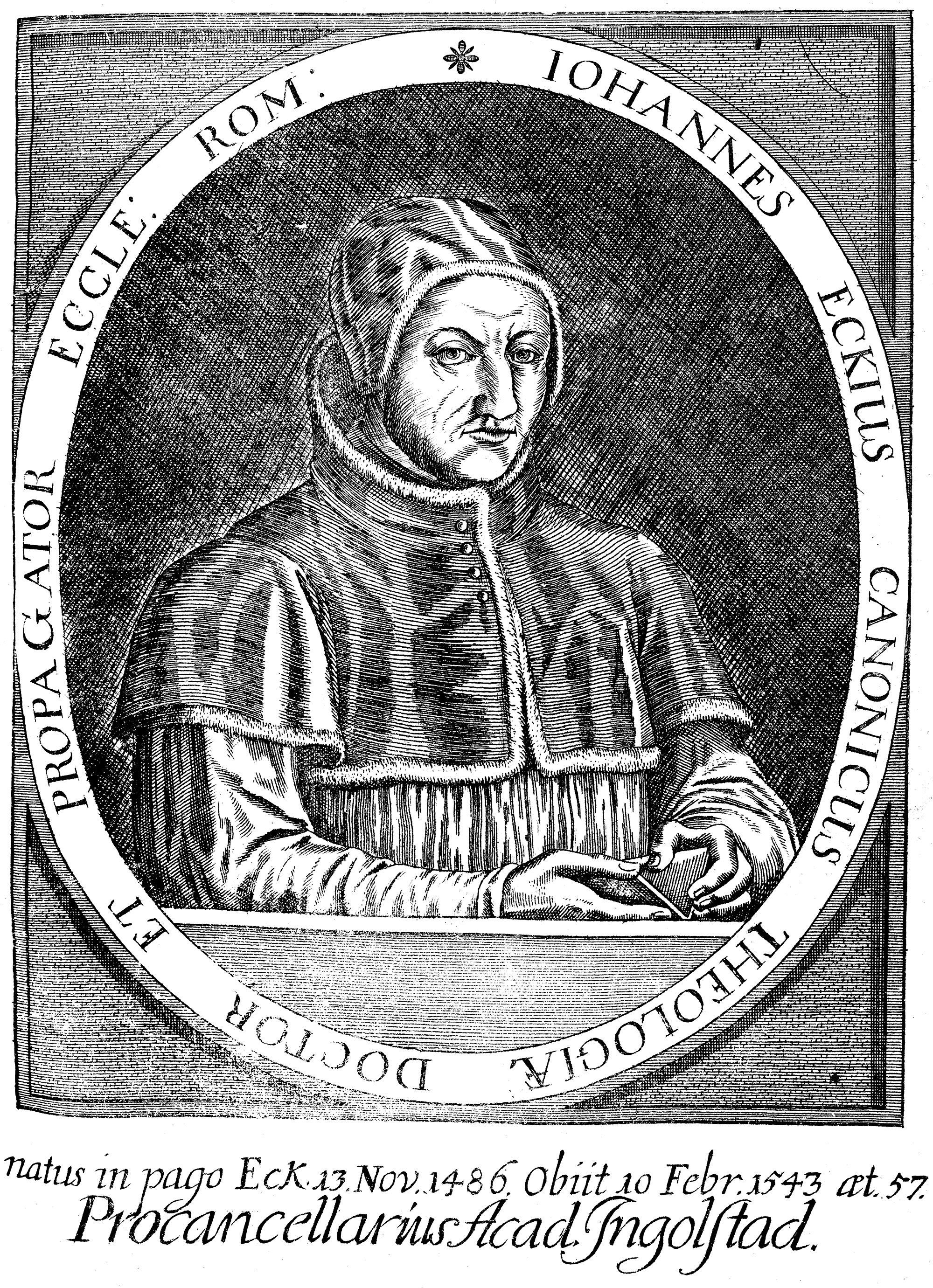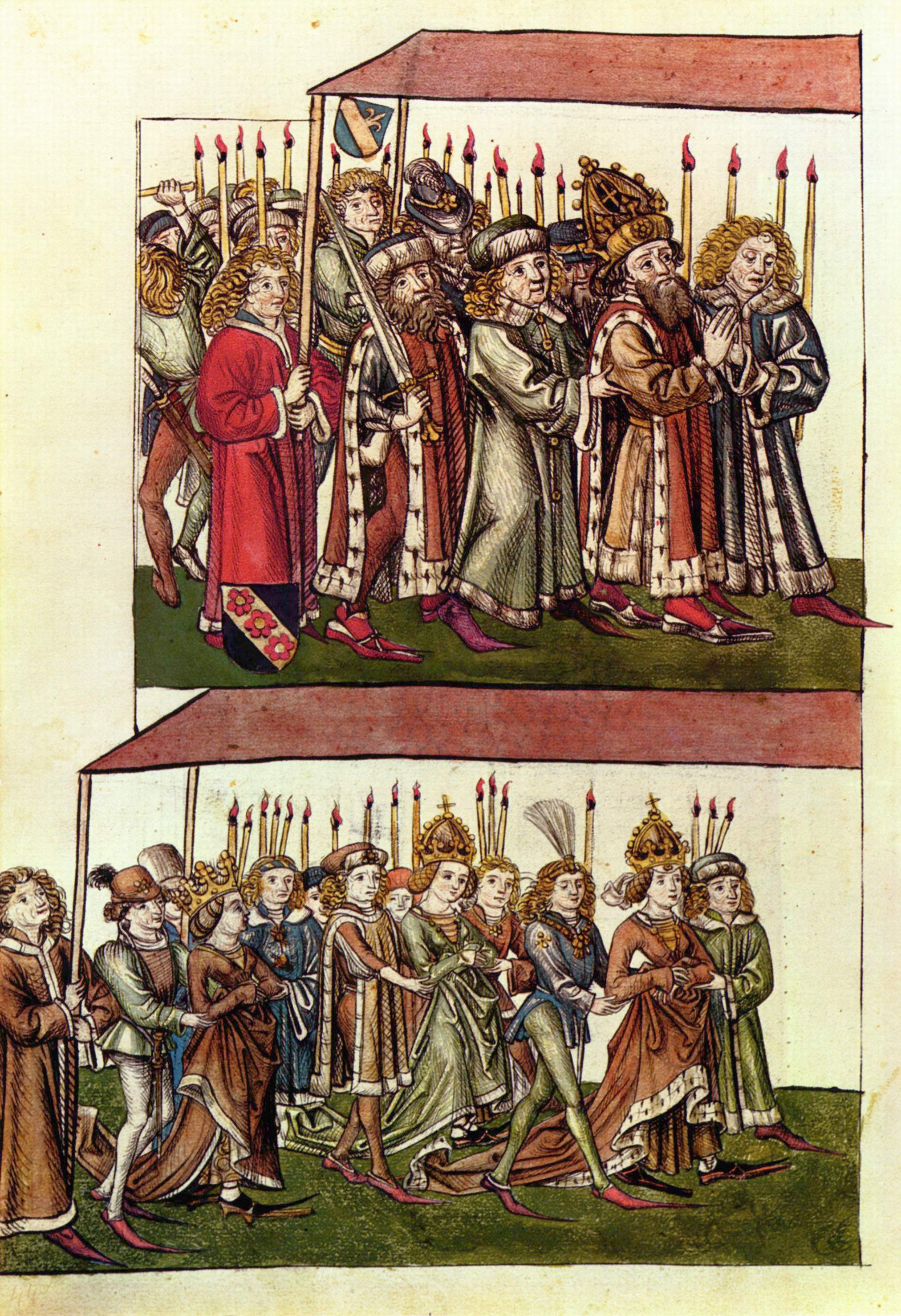|
Edict Of Worms
The Diet of Worms of 1521 ( ) was an imperial diet (a formal deliberative assembly) of the Holy Roman Empire called by Emperor Charles V and conducted in the Imperial Free City of Worms. Martin Luther was summoned to the diet in order to renounce or reaffirm his views in response to a Papal bull of Pope Leo X. In answer to questioning, he defended these views and refused to recant them. At the end of the diet, the Emperor issued the Edict of Worms (''Wormser Edikt''), a decree which condemned Luther as "a notorious heretic" and banned citizens of the Empire from propagating his ideas. Although the Protestant Reformation is usually considered to have begun in 1517, the edict signals the first overt schism. The diet was conducted from 28 January to 25 May 1521 at the Bischofshof palace in Worms, with the Emperor presiding. Other imperial diets took place at Worms in the years 829, 926, 1076, 1122, 1495, and 1545, but unless plainly qualified, the term "Diet of Worms" usually ... [...More Info...] [...Related Items...] OR: [Wikipedia] [Google] [Baidu] |
Papal Bull
A papal bull is a type of public decree, letters patent, or charter issued by the pope of the Catholic Church. It is named after the leaden Seal (emblem), seal (''bulla (seal), bulla'') traditionally appended to authenticate it. History Papal bulls have been in use at least since the 6th century, but the phrase was not used until around the end of the 13th century, and then only internally for unofficial administrative purposes. However, it had become official by the 15th century, when one of the offices of the Apostolic Chancery was named the "register of bulls" ("''registrum bullarum''"). By the accession of Pope Leo IX in 1048, a clear distinction developed between two classes of bulls of greater and less solemnity. The majority of the "great bulls" now in existence are in the nature of confirmations of property or charters of protection accorded to monasteries and religious institutions. In an era when there was much fabrication of such documents, those who procured bulls ... [...More Info...] [...Related Items...] OR: [Wikipedia] [Google] [Baidu] |
On The Babylonian Captivity Of The Church
''Prelude on the Babylonian Captivity of the Church'' (, October 1520) was the second of the three major treatises published by Martin Luther in 1520, coming after the '' Address to the Christian Nobility of the German Nation'' (August 1520) and before ''On the Freedom of a Christian'' (November 1520). The book-length work was theological, and as such was published in Latin as well as German, the language in which the treatises were written. Context The book was circulating in print not quite a week when the papal bull against Luther arrived in Wittenberg in October 1520. The bull and the book were being prepared simultaneously. Luther accuses the Catholic Church and the papacy of keeping the church in captivity, equating Rome with the biblical Babylon that exiled the Israelites from their homeland, holding them captive in Babylon. According to Luther, the pope was holding the church in captivity through the use of the sacramental system and Catholic theology. In 1521, Luthe ... [...More Info...] [...Related Items...] OR: [Wikipedia] [Google] [Baidu] |
To The Christian Nobility Of The German Nation
''To the Christian Nobility of the German Nation'' () is the first of three tracts written by Martin Luther in 1520. In this work, he defined for the first time the signature doctrines of the priesthood of all believers and the two kingdoms. The work was written in the vernacular language German and not in Latin. History The Disputation of Leipzig (1519) brought Luther into contact with the humanists, particularly Melanchthon, Reuchlin, Erasmus, and associates of the knight Ulrich von Hutten, who, in turn, influenced the knight Franz von Sickingen. Von Sickingen and Silvester of Schauenburg wanted to place Luther under their protection by inviting him to their fortresses in the event that it would not be safe for him to remain in Saxony because of the threatened papal ban. Between the Edict of Worms in April 1521 and Luther's return from the Wartburg in March 1522 a power struggle developed of who was to lead the Reformation through its competing possibilities and how the ... [...More Info...] [...Related Items...] OR: [Wikipedia] [Google] [Baidu] |
Canon Law Of The Catholic Church
The canon law of the Catholic Church () is "how the Church organizes and governs herself". It is the system of religious laws and canon law, ecclesiastical legal principles made and enforced by the Hierarchy of the Catholic Church, hierarchical authorities of the Catholic Church to regulate its external organization and government and to order and direct the activities of Catholics toward the mission of the Church. It was the first modern Western world, Western legal system and is the oldest continuously functioning legal system in the West, while the unique traditions of Eastern Catholic canon law govern the 23 Eastern Catholic Churches, Eastern Catholic particular churches '. Positive ecclesiastical laws, based directly or indirectly upon immutable divine law or natural law, derive formal authority in the case of universal laws from Promulgation (Catholic canon law), promulgation by the supreme legislator—the supreme pontiff, who possesses the totality of legislative, executi ... [...More Info...] [...Related Items...] OR: [Wikipedia] [Google] [Baidu] |
Luther Statue, Martin-Luther-Denkmal, Worms
Luther most commonly refers to: * Martin Luther (1483–1546), German priest credited with initiating the Protestant Reformation Luther may refer to: People * Luther (given name) * Luther (surname) Places * Luther (crater), a lunar crater named after astronomer Robert Luther * Luther, Indiana, an unincorporated community in the United States * Luther, Iowa, a town in Boone County, Iowa, United States * Luther, Michigan, a village in Lake County, United States * Luther, Montana, an unincorporated community in Carbon County, United States * Luther, Oklahoma, a town in Oklahoma County, Oklahoma, United States Arts, entertainment, and media Fictional characters * Luther, a character from '' The Adventures of Luther Arkwright'' limited comic book series * Luther, a gang member in ''The Warriors'' (1979) American cult film * Luther Bentley, the villain of ''Adventures of Captain Marvel'' (1941) * Luther Stickell, a supporting character in the ''Mission: Impossible'' film ... [...More Info...] [...Related Items...] OR: [Wikipedia] [Google] [Baidu] |
Richard Von Greiffenklau Zu Vollrads
Richard von Greiffenklau zu Vollrads (also spelled Greiffenclau and Vollraths; 146713 March 1531) was a German clergyman who served as Archbishop and Elector of Trier from 1511 until his death in 1531. Biography Richard von Greiffenklau zu Vollrads was born in Schloss Vollrads in 1467, the son of Johann von Greiffenklau and Klara von Ratsamhausen. As the family's fourth son, Richard was groomed for a career in the church from a young age. In 1487, he became a canon of the Cathedral of Trier. He began studies in Paris in 1488. In 1503, he was made cantor of the Cathedral of Trier and also became a canon of Mainz Cathedral. Richard was elected Archbishop of Trier on 15 May 1511. Pope Julius II confirmed his appointment on 26 April 1512, and on 30 May 1512 Archbishop of Mainz Uriel von Gemmingen consecrated Richard as a bishop. Only 23 days after his installation as Archbishop, Richard opened the altar that had enshrined a relic believed to be the seamless robe of Je ... [...More Info...] [...Related Items...] OR: [Wikipedia] [Google] [Baidu] |
Archbishop Of Trier
The Diocese of Trier (), in English historically also known as ''Treves'' () from French ''Trèves'', is a Latin Church ecclesiastical territory or diocese of the Catholic church in Germany."Diocese of Trier" '' Catholic-Hierarchy.org''. David M. Cheney. Retrieved February 29, 2016"Diocese of Trier" ''GCatholic.org''. Gabriel Chow. Retrieved February 29, 2016 When it was the archbishopric and , it was ... [...More Info...] [...Related Items...] OR: [Wikipedia] [Google] [Baidu] |
Johann Eck
Johann Maier von Eck (13 November 1486 – 13 February 1543), often anglicized as John Eck, was a German Catholic theologian, scholastic, prelate, and opponent of Martin Luther. Life Johann Eck was born Johann Maier at Eck (later Egg, near Memmingen, Swabia) and derived his additional surname from his birthplace, which he himself, after 1523, always modified into Eckius or Eccius, i.e. "of Eck". His father, Michael Maier, was a peasant and bailiff, or ''Amtmann'', of the village. The boy's education was undertaken by his uncle, Martin Maier, parish priest at Rottenburg on the river Neckar. At the age of 12 he entered the University of Heidelberg, which he left in the following year for Tübingen. After taking his master's degree in 1501, he began the study of theology under Johann Jakob Lempp, and studied the elements of Hebrew and political economy with . Johann Eck left Tübingen in 1501 on account of the plague and after a year at Cologne finally settled at Freiburg Uni ... [...More Info...] [...Related Items...] OR: [Wikipedia] [Google] [Baidu] |
Emperor Charles V
Charles V (24 February 1500 – 21 September 1558) was Holy Roman Emperor and Archduke of Austria from 1519 to 1556, King of Spain (as Charles I) from 1516 to 1556, and Lord of the Netherlands as titular Duke of Burgundy (as Charles II) from 1506 to 1555. He was heir to and then head of the rising House of Habsburg. His dominions in Europe included the Holy Roman Empire, extending from Kingdom of Germany, Germany to Kingdom of Italy (Holy Roman Empire), northern Italy with rule over the Austrian hereditary lands and Burgundian Low Countries, and Habsburg Spain, Spain with its possessions of the southern Italy, southern Italian kingdoms of Kingdom of Naples, Naples, Kingdom of Sicily, Sicily and Kingdom of Sardinia (1324–1720), Sardinia. In the Americas, he oversaw the continuation of Spanish colonization of the Americas, Spanish colonization and a short-lived German colonization of the Americas, German colonization. The personal union of the Empire of Charles V, European a ... [...More Info...] [...Related Items...] OR: [Wikipedia] [Google] [Baidu] |
Council Of Constance
The Council of Constance (; ) was an ecumenical council of the Catholic Church that was held from 1414 to 1418 in the Bishopric of Constance (Konstanz) in present-day Germany. This was the first time that an ecumenical council was convened in the Holy Roman Empire. The council ended the Western Schism by deposing or accepting the resignation of the remaining papal claimants and by electing Pope Martin V. It was the last papal election to take place outside of Italy. The council also condemned Jan Hus as a heretic and facilitated his execution; and it ruled on issues of national sovereignty and the rights of pagans and just war in response to a conflict between the Grand Duchy of Lithuania, the Kingdom of Poland and the Order of the Teutonic Knights. The council is also important for its role in the debates over ecclesial conciliarism and papal supremacy. Constance issued two particularly significant decrees regarding the constitution of the Catholic Church: '' Haec sancta'' ... [...More Info...] [...Related Items...] OR: [Wikipedia] [Google] [Baidu] |





